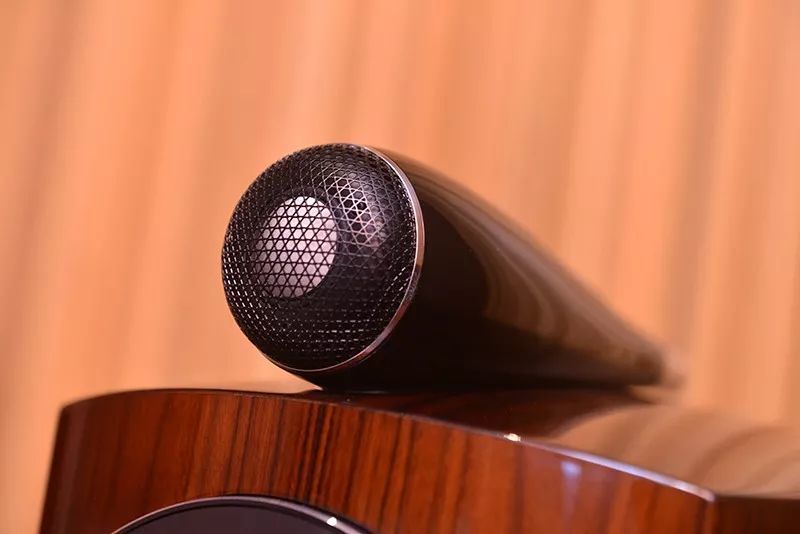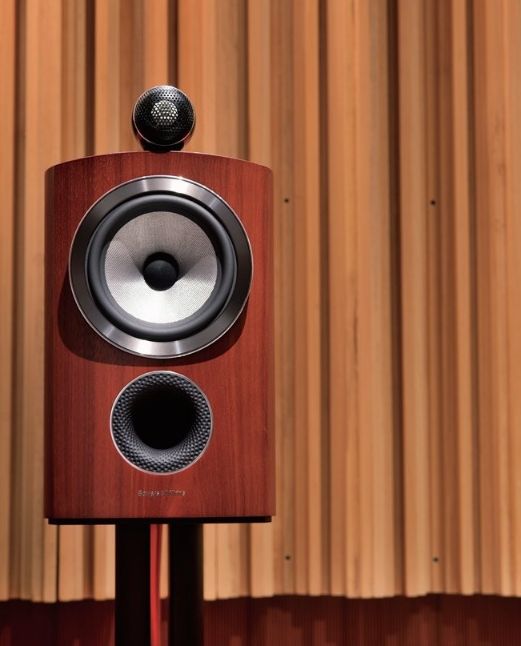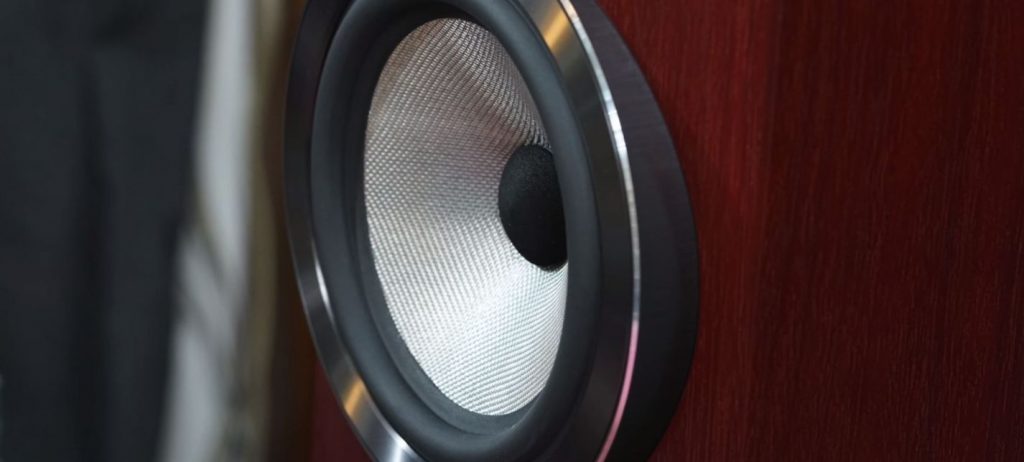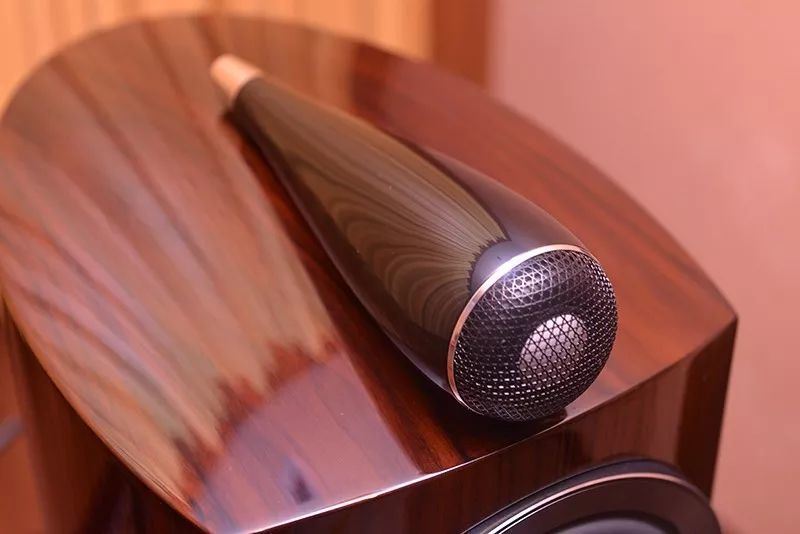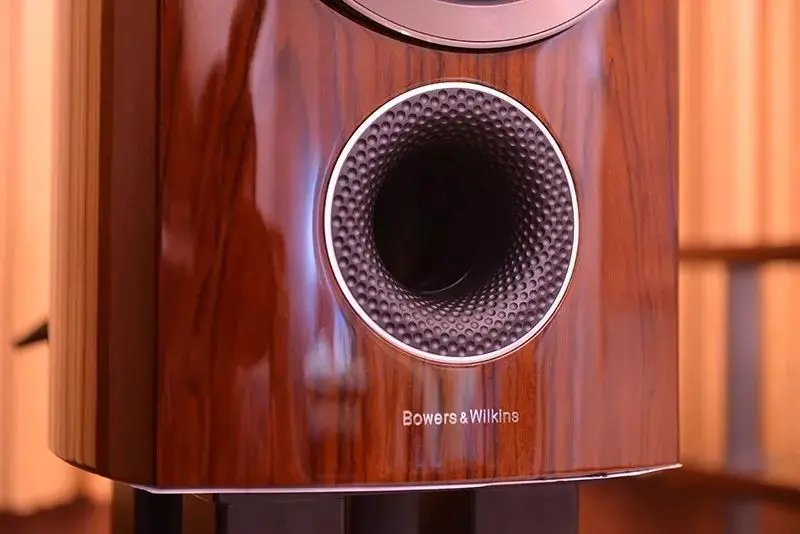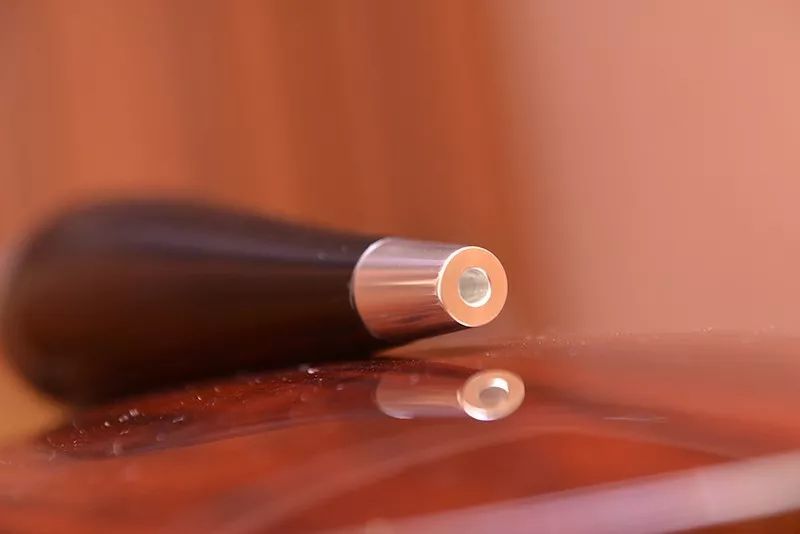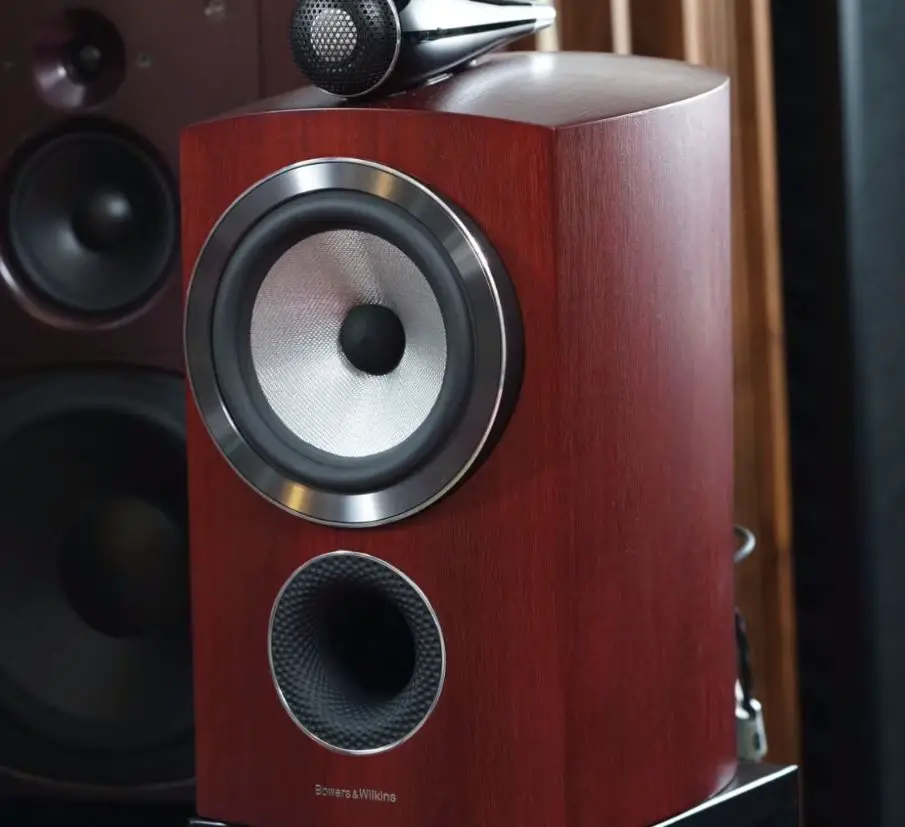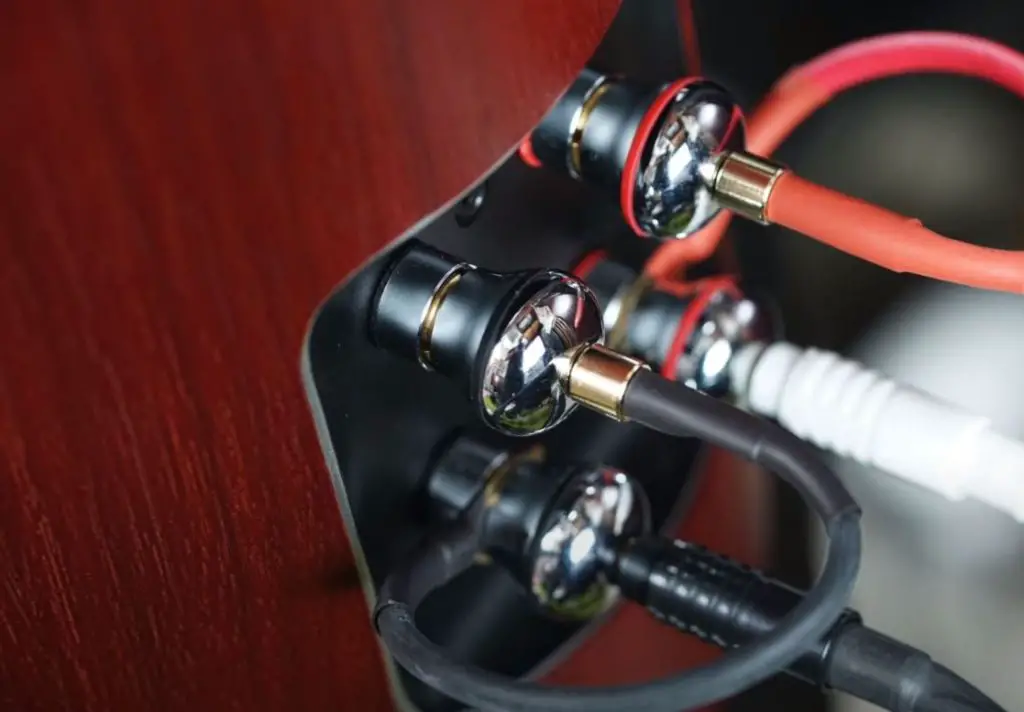B&W 805 D3 Review
B&W 805 has launched a new version of 805 D3. Speaking of B&W 805 speaker, my impression is that it is the most popular bookshelf speaker in B&W product lines. Why would I say that? I think there are three aspects:
- The size is moderate. Like the 805, it is the only bookshelf speaker in the B&W 800 series, with the most miniature cabinet. For most of the home Use conditions, 805 is more suitable.
- It is easier to drive.
- It uses B&W’s top-notch units and designs.
Although the 805 is the smallest and cheapest model in B&W’s top series, regardless of the generation of products, the speaker unit, cabinet design, and other components used in it are the best things B&W has in the corresponding period.
B&W first launched the 800 series in 1998. That is the first time that the tweeter and mid-range speaker designs were introduced. At that time, there were models from 800, 801, 802, 803, 804, 805, etc. There is also a home theatre system. When the second generation was launched in 2010, the 801 was canceled, and the flagship 800 came down to the 802, and other models were available. The most significant change in the second generation is that the tweeter is changed to a diamond dome, and the shape of the other cabinets remains largely unchanged.
Design
Today’s B&W 805 D3 bookshelf speaker, compared to the previous generation, its speaker unit has been modified and improved. The main change is that the mid-bass unit has changed from the original Kevlar diaphragm to a brand new Continuum diaphragm, and the tweeter still uses a diamond dome tweeter. In the case of the box, to further strengthen the rigidity of the box, B&W uses solid wood instead of MDF board to make the structure frame, and the weight is increased.
At the same time, the strength of the box is strengthened by adding aluminum parts. It is worth noting that the bottom of the 805 D3 uses an aluminum bottom plate, which makes the speaker more stable. The B&W 805 D3 speaker I reviewed today is the latest version of the 805 series.
Many audiophiles may think that the audio pieces of equipment are for listening, and the appearance does not need to be too fancy, as long as the sound is good. But no matter how high-end audio equipment, after all, it is a commodity. After all, when we buy audio equipmemts, the first thing we see is the appearance and craftsmanship, not the sound it replays.
And now consumers not only consider their own needs when making the purchases and consider the needs of family members, the decoration environment, and even the feelings of friends. A piece of world-renowned audio equipment with excellent sound effects, beautiful appearance, and exquisite craftsmanship placed at home is really a pleasing thing. I believe that the purpose of B&W launching the 805 D3 is also the same thing.
The woofer
The famous yellow Kevlar midrange unit from B&W was first introduced in 1974 and was replaced by D3. The new midrange single diaphragm is made of composite material, and special treatment is applied. The final result is that the performance is better than the previous Kevlar material, which took eight years to develop. In addition, the original metal phase plug in the center of the diaphragm is also eliminated and replaced by a dust cover. And for the famous FST fixed overhang design, it remains.
The appearance of the woofer looks the same, but the diaphragm material has also been changed. Initially, the inner and outer layers of carbon fiber sandwiched Roahcell foam material. Now the inner and outer layers are still made of carbon fiber, but the middle layer is changed to a better material called Aerofoil, which makes the diaphragm harder and lighter. The diameter of the voice coil is 4 inches, which seems to be the same as the previous generation.
The Tweeter
Although the appearance of the treble unit and the midrange unit of the 802 D3 are the same, they have been redesigned. The appearance is more streamlined, and the size is slightly reduced. B&W use aluminum as the internal structure and then add reinforcement. B&W 805 D3 uses the new material to shape it into a water drop shape.
The tweeters of the first and second generations are the same no matter 801, 802, 803, and the same size. Whether it is a tweeter or a midrange unit, the inside of the water drop-shaped cabinet is different from D2. After laser measurement, engineers changed the internal design to reduce the standing wave resonance caused by the back wave of the unit.
The grille of the tweeter has also been changed. The grille of the D2 is soft, which can easily damage the diamond tweeter. The D3’s grille is rigid and can’t be pressed down by fingers, which can fully protect the diamond diaphragm. Moreover, this protective grille is easy to remove, and it can be turned off with just a slight turn.
Other Features
In addition to the upgrade of the woofer and tweeter, the most significant difference is that the two monomers are first locked on an aluminum alloy frame. D3’s frame is made into an arc at the same angle as the cabinet. This approach also reduces the impact of the vibration of the woofer itself on the wooden cabinet.
The 802 D2’s crossover was placed in the base, but now it is placed in the cabinet. The base is still made of aluminum alloy, solid and heavy, weighing 18 kilograms. There is a gap between the base and the wooden box to allow the airflow from the bass reflex hole to escape. The bass reflex hole is still the same as the previous generation, placed at the bottom of the wooden box, emitting downwards.
Sound Performance
When I listen to music, I have a habit. That is, I like to turn the volume up. Not only can I hear more details, but I can also better feel the charm and passion in the music and test the sound performance of the equipment. Take the speaker as an example. It needs to have a good resolution and needs to have enough sound openness so that you can hear the open sound field and sense of space, high-density sound and condensed sound image, and perfect naturalness of the sound.
In the Musica Espanola series released by DECCA in 1992, I especially like Ruggiero Ricci‘s interpretation of Sarasate‘s “Jota Aragonesa” and “Introduccion y tarantella”. Obviously, the entire mid-range and even the high-frequency sounds of the 805 D3 have high sound openness and resolution. Especially when playing “Jota Aragonesa”, once you turn on the volume, you will find it first.
When the piano and violin are played, the instrument’s image can be clearly felt, and the texture is also firm, and there are many details of the string. However, more importantly, I can feel the free and unrestrained performance of Ruggiero Ricci, and I will feel excited when listening to it.
Speaking of excitement, the B&W 805 D3 speaker gave me a complete sense of excitement when playing “Introduccion y tarantella”. Although this piece of music was recorded in mono (1958), it does not mean that the sound is not perfect. Through the 805 D3 Premium Edition replay, I can also feel the passion and unrestrained interpretation style of Ruggiero Ricci. The performance of the whole piece of music is full of enthusiasm. That is the advantage of the high openness of the sound and abundant resolution.
The sound details are excellent, but the charm and passion in the music can be replayed. That is the most challenging part of the sound replay!
In addition to this record, Sheffield Lab’s “DISCOVERED AGAIN” album is also a CD record that must be listened to at a high volume. The main reason is that the recording itself is low in level. It is the characteristic of the company’s records. But the prerequisite for listening loudly is that your power amplifier must have reasonable control, sufficient power reserve, and the speakers must have enough sound openness and resolution to have good results.
Although the 805 D3 is a two-way two-driver bookshelf speaker, the reproduced sound field effect is very powerful. For example, during the sound test, the distance between the two speakers was about 2 meters, but the width of the sound field displayed was beyond this distance.
I don’t know if you have ever listened to the symphony recorded by Nimbus Records, a small British record company. I recently bought a CD album of “Schubert’s Ninth Symphony: The Great” released by this company in 1990, for pure digital recording. The sound replayed from the 805 D3 completely interprets the high-quality production of this record. The B&W 805 D3 pulls out the depth and width of the sound field, and the sound richness of the spatial reverberation effect on site can even be fully described. More importantly, the sound details of each instrument can be very clear. The music is reproduced vividly without losing the vivid texture of the instrument.
“Paganini Concerto No. 1 and 4” released by Philips Record, is also a record I like to listen to recently. I have to say that the playback effect of this record on different equipment is really too significant. If you don’t feel the scale of the band in the performance, you hear a small-heartedness in the violin performance. This sound can tell you with certainty that there are obvious shortcomings in audio equipment.
On the contrary, if you hear a rich and textured sound in the violin performance part, and the band performance part not only has a sense of scale, but the string part can also have a clear sense of lines. Congratulations, this shows that the audio equipment replays performance is quite excellent.
A two-way, two-unit bookshelf speaker like the 805 D3 is perfect for playback. The width of the sound field and the sense of string lines in the band can be easily displayed. The 805 D3 reproduces the violin performance part perfecting, indicating it has an excellent high-frequency performance. The sound can be described as rich and the gentle, delicate, noble, and charming string timbre of Philips Records. The sound of the 805 D3 is unexpected and surprising.
Conclusion
The B&W 805 D3 desktop speaker gives me the feeling that this is a product launched by B&W to perfect the speaker. What is perfect? First, it’s brand awareness. Second, it represents one of B&W’s highest technological content equipment. Third, 805 D3 has a beautiful appearance and exquisite craftsmanship. Fourth, D3 has a first-class sound reproduction level, with a high sound openness. The resolution better restores the details in the record and makes a reasonable interpretation of the connotation in the music, blooming incredible sound effects.
B&W 805 D3 Specs
- Technical features: Diamond tweeter / Continuum cone bass mid / Anti-resonance plug / Flowport / Optimized Matrix / Solid body tweeter / Tweeter-on-Top
- Description: 2-way vented-box system
- Drive units: 1 inch Diamond dome high-frequency / 6.5 inch Continuum cone bass midrange
- Frequency range :34Hz to 35kHz
- Frequency response (+/-3dB from reference axis): 42Hz to 28kHz
- Sensitivity (1m on axis at 2.83Vrms): 88dB
- Harmonic distortion: 2nd and 3rd harmonics (90dB, 1m on axis) / <1 % 70Hz – 20kHz / <0.6% 120Hz – 20kHz
- Nominal impedance (min): 8Ω (minimum 4.6Ω)
- Recommended amplifier power: 50W – 120W into 8Ω on unclipped programme
- Max. recommended cable impedance: 0.1Ω
- Dimensions: Height: 424mm / Width: 238mm /Depth: 345mm
- Net weight: 12.6kg (28lb)
- Cabinet finishes: Gloss black / Satin white / Rosenut / Prestige
- Grille finishes: Black / Grey
